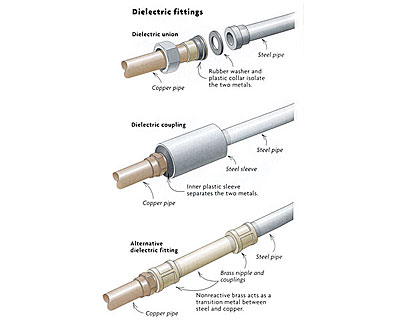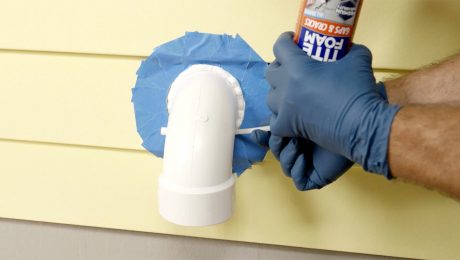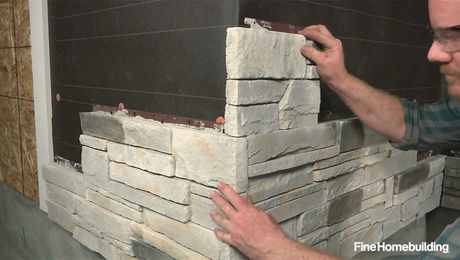Joining galvanized and copper plumbing
You'll need a dielectric plumbing fitting: A coupling, union, or brass alternative will do the trick
Q:
The other day, a galvanized plumbing-supply line broke on a house I was remodeling. I decided to replace the galvanized line with copper. I know that when you join pipes made of dissimilar metals, you are supposed to use a dielectric fitting that isolates the two metals. However, the plumber who tied the copper line to the galvanized line under the front yard said that galvanic corrosion would not occur because the union was underground. He insisted that dielectric fittings have to be used only above ground. Is this true?
Sharon Tyler Hoover, Fayetteville, AR
A:
Peter Hemp, author of Plumbing a House, replies: Plumbing would be much simpler work were it not for all of the joints that we need to make in the pipes. Soldering copper pipe is must-have skill for a plumber. And even if PEX tubing installations require fewer joints, if you don’t make PEX connections right, leaks are guaranteed. And for drains, you have to know how to join PVC and ABS plastic pipe. Among the trickiest joints to make are those between dissimilar materials, like the two different metals you are asking about. Galvanic or dielectric corrosion occurs when a ferrous metal such as steel contacts a nonferrous metal such as copper. The ferrous metal will always corrode faster than the nonferrous metal.
I am not a metallurgist or a corrosion engineer, so I can speak only from my long-term plumbing-repair experience. What I’ve learned is that the absence of a dielectric fitting at the juncture of copper pipe to steel pipe, regardless of whether it was buried or above ground, always spelled doom for the joint. Some joints failed faster than others, particularly in piping sections where an electrician or a phone company had attached a grounding wire.
The solution, as you also pointed out and as most codebooks recommend, is using a dielectric fitting to isolate the two different metals. The two common manufactured dielectric fittings, unions and couplings (see drawings), depend on plastic or rubber to separate the two metals. However, I’ve seen many instances in which manufactured fittings also fail. (I have a hunch that it’s because they don’t have enough mass).
What I do instead is separate the galvanized-steel piping from the copper piping with an assembly consisting of two standard brass couplings joined by a 6-in. brass nipple (bottom drawing). Brass does not react with either steel or copper, making it a good transitional metal. In your case, I recommend calling your plumber back to unearth the connection he made and to install some sort of dielectric fitting to protect the joint.


























